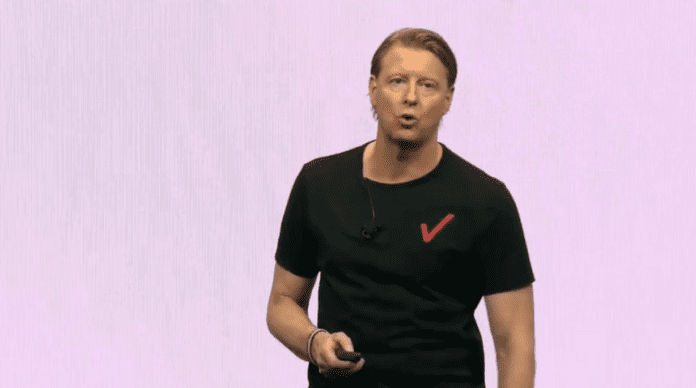Verizon updates on C-Band, fiber build, FWA sub growth and enterprise 5G outlook
While acknowledging his dissatisfaction with the company’s performance in 2022, Verizon CEO Hans Vestberg this week gave a wide-ranging update on the operator’s approach to 5G monetization. Looking at 5G-backed service revenues, Vestberg called out fixed wireless access (FWA) as “the killer application today;” he said Verizon added 400,000 FWA subscribers in the first quarter. Also noting a positive outlook in consumer mobile and private networks, Vestberg said, “All three of them are now happening…and they are built on the same infrastructure. So basically I have three business cases on the same infrastructure. That was the whole idea of the strategy.”
Looking at that larger strategy in the JP Morgan Global Technology, Media and Communications Conference in Boston, the Verizon chief divvied the 5G era, running some 10 to 12 years, into three phases. The first three to five year phase is network deployment, followed by a period of innovation, then reaching a level of maturity, which is where LTE is today, he said. With Verizon’s 5G efforts entering phase two, Vestberg sketched out the coming potential of massive IoT support, 5G Advanced, network slicing and the transition to Standalone 5G. In this phase, he said, “We’re going to see more innovation.”
With regard to private 5G, Vestberg characterized this as a first step that sets the stage for layering in mobile edge computing (MEC) infrastructure as supported by Verizon’s partnerships with the big three hyperscalers for both public and on-premises MEC. “It’s a solution-based journey with business-to-business that takes some time but clearly we’re in the lead,” Vestberg said. “We were early out with it.”
Worth noting that this week research house the Dell’Oro Group said in a note the MEC market has “failed to materialize,” and lowered expectations by 20% for 2023. “The MEC market is not reaching the potential market as expected initially. Except for China, the big promise for MEC was addressing the needs of enterprises. Several factors are contributing to the slower uptake,” Dave Bolan, research director at Dell’Oro, wrote. Those factors, he said, include the increased emphasis on Standalone (SA) private networks( which has taken some of the spotlight from MEC) and a lack of applications with “well-defined” ROI, competition from hyperscalers cloud, and the impending Wi-Fi 7 standard.
Vestberg said he feels Verizon has been “underrated” on its fiber investments beginning in the 2016-2017 timeframe ahead of a ramp in its 5G RAN upgrades. He said more than 50% of Verizon’s radios are attached to Verizon-owned fiber. As to why not more, he said the return on investment doesn’t work out in some rural areas and, in other areas, the company has attractive leasing agreements in place. In terms of the market-by-market synergies between fiber and 5G uptake, “I think that ultimately in high-traffic areas where we have good technology, you do better in general,” he said. Big picture on fiber deployment and associated capex, “We have gone over the hump,” he said, and are now focused on “success-based fiber.”
Verizon is guiding down on capex spend—coming from around $24 billion in 2022 to between $18.25 billion to $19.25 billion this year, then stabilizing around $17 billion after that. But the operator will continue to deploy its C-Band spectrum as it’s cleared. Vestberg said the company has around 60 megahertz deployed on average in around 70 markets, but will eventually have access to 160 megahertz on average in 400 markets.

